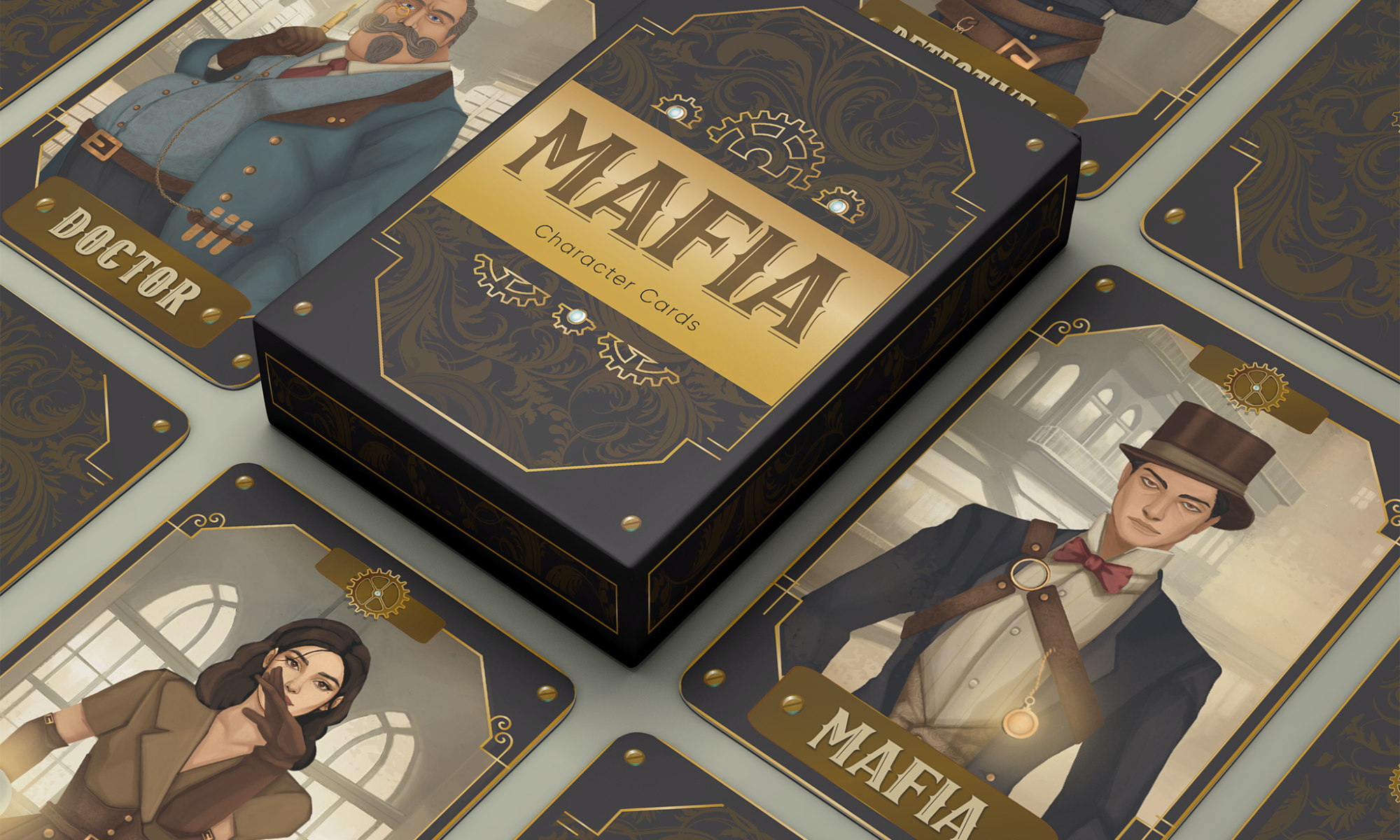
The game
Mafia, occasionally known as Werewolf, is a Russian social deduction game invented in 1986 at Moscow State University’s Psychology Department by Dimitry Davidoff. He designed the game to integrate psychology research with his job as a high school teacher. It became popular in other regions of Europe and, subsequently, the United States in the 1990s. Andrew Plotkin added a werewolf theme to the game in 1997, stating that the Mafia had less cultural resonance and that the werewolf concept suited the idea of a concealed enemy that appeared normal during the day.
The game’s premise is that a fictitious Mafia group infiltrates a peaceful town with the intent of murdering innocent citizens while the citizens attempt to identify and eliminate the Mafia members. The game continues until one of the two factions meets the prerequisites for victory; for the civilians, this usually means eradicating the Mafia, while for the Mafia, it usually means establishing numerical parity with the town.
This game was introduced to me by one of my teachers on my sixth-grade field trip to Ubud, Indonesia. I don’t recall her name now, but I am forever thankful to her for collecting a group of bored adolescents and playing this game with them. I had no clue then that this game would become a constant in my life; it has served as an icebreaker at times and a friendship breaker at others, but as I reflect on it, I have nothing but fond memories of playing it. When deciding what I wanted to do for my final-year project, I knew I had to work on this game because this game only exists in concept; there is no tangible game for it, there is the variation werewolf, which includes a deck of cards but for the game Mafia there is nothing. When we played it, we wrote all the characters onto little paper pieces and randomly distributed them. So I wanted to create something more concrete for my friends and myself.
I wanted to take this game, and maintain the original theme and concept while introducing additional elements, such as the option to upgrade and to make the game more engaging for players. The final objective was to enhance game immersion with dedicated character design and world-building.
The characters and their roles
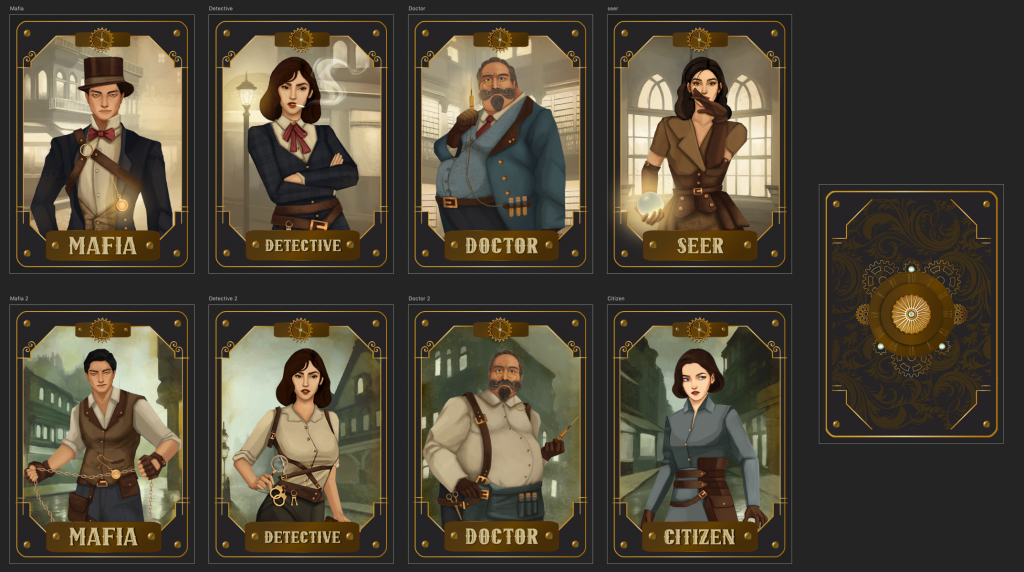
The game models a conflict between two groups, the Mafia and the townspeople. At the start of the game, each player is secretly assigned a role affiliated with one of these teams. The game has two alternating phases: first, a night phase, during which the Mafia can eliminate other players, and second, a day cycle, in which all surviving players debate and vote to eliminate a suspect. The game continues until the Mafia is caught or most citizens are eliminated. The game has five characters, three with upgraded variations.
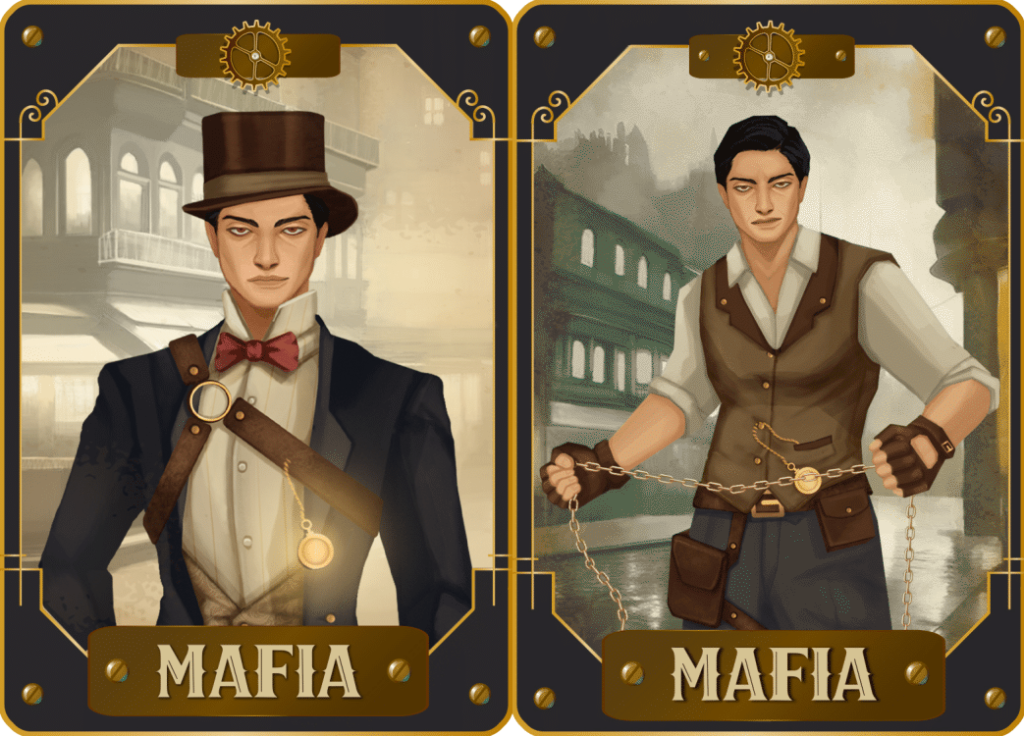
The first character is the Mafia; his goal is to eliminate the townspeople. At the lower level, the Mafia can only injure or steal items from the villagers. He can upgrade if he injures two townspeople without being discovered. In the upgraded level, the Mafia can point silently to the player they want to “kill” (eliminate from the game).
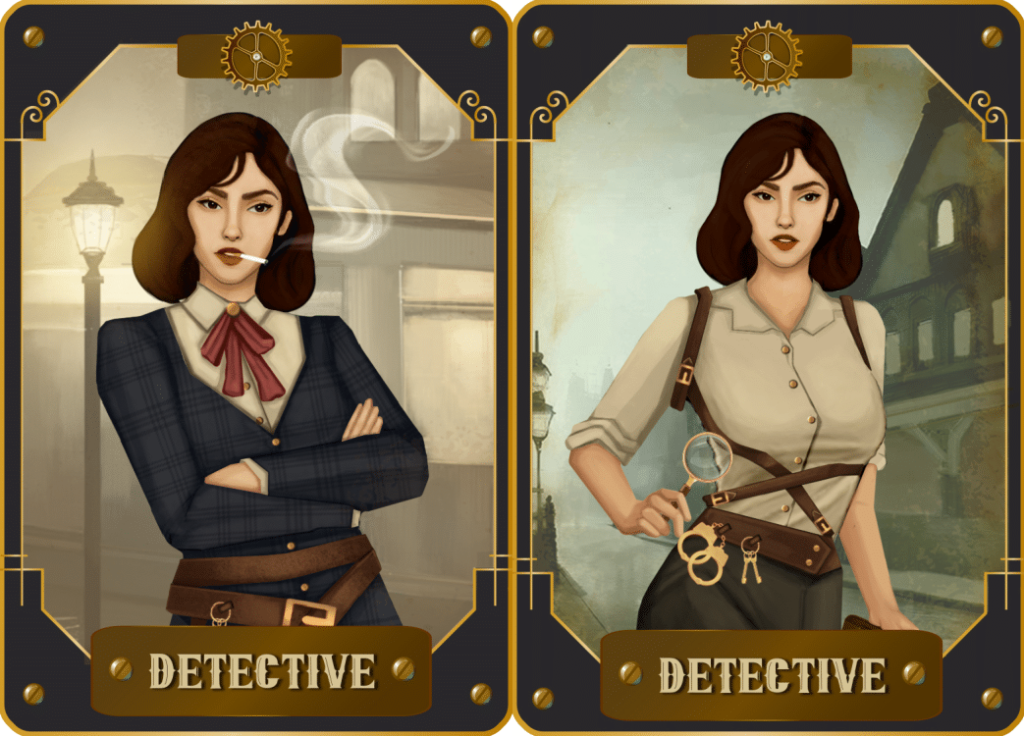
The second character is the Detective, who aims to look for the Mafia. The lower-level Detective can get hints about the Mafia from the moderator. If the player successfully apprehends one mafia member, she can upgrade. The upgraded level is similar, where the Detective can get hints about the Mafia from the moderator, but at this level, if the Detective dies, the player she is pointing at dies (regardless of the votes.)
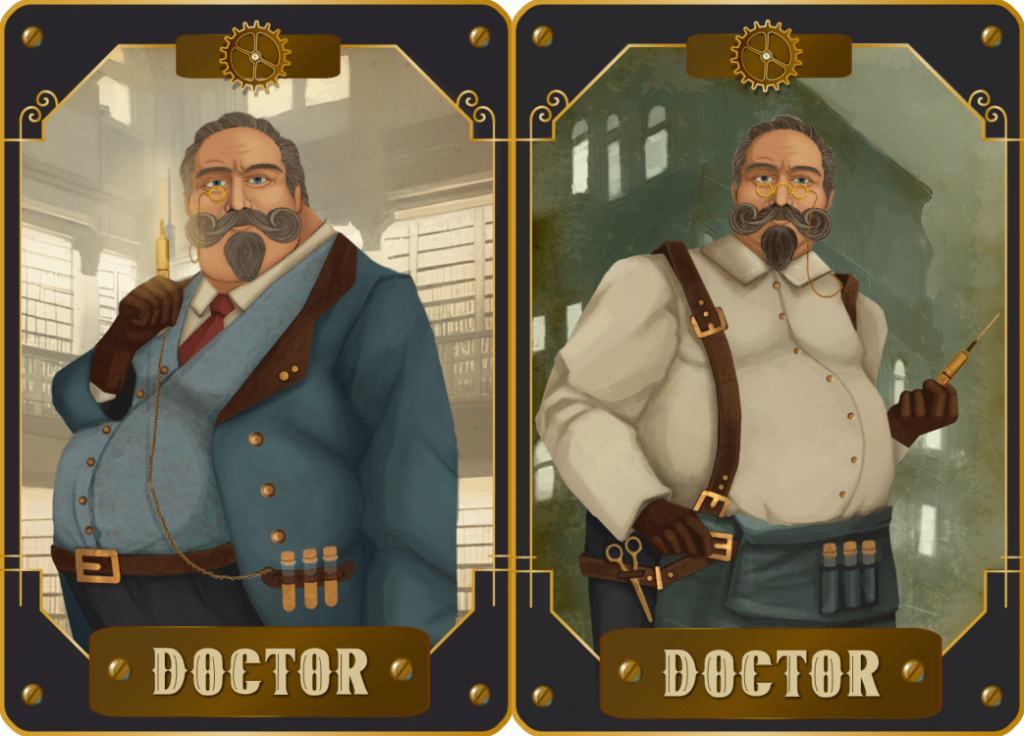
The Doctor character can save a player he thinks the Mafia has killed. If the Doctor saves the right player, that player is returned to the game. At the lower level, the Doctor cannot save themselves. If he successfully saves at least two lives, he can upgrade to the higher level where the Doctor can save themselves.
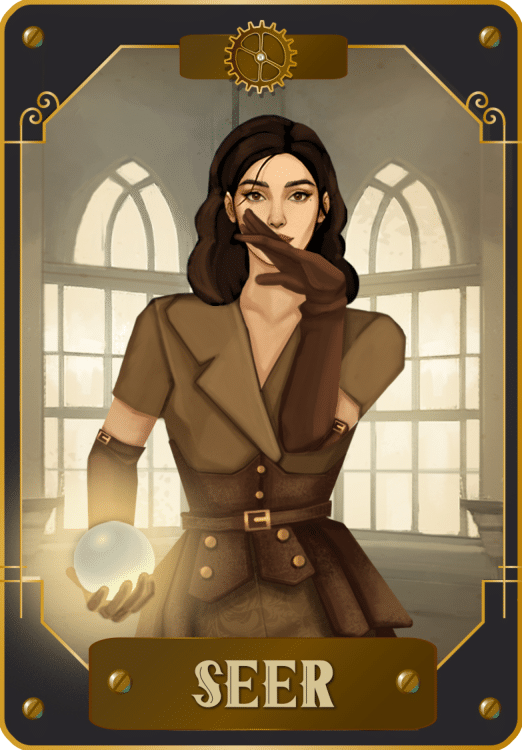
The Seer character has the ability to look at another player’s card but not move them. The Seer is a wild card and can choose to support the Mafia or the townspeople.
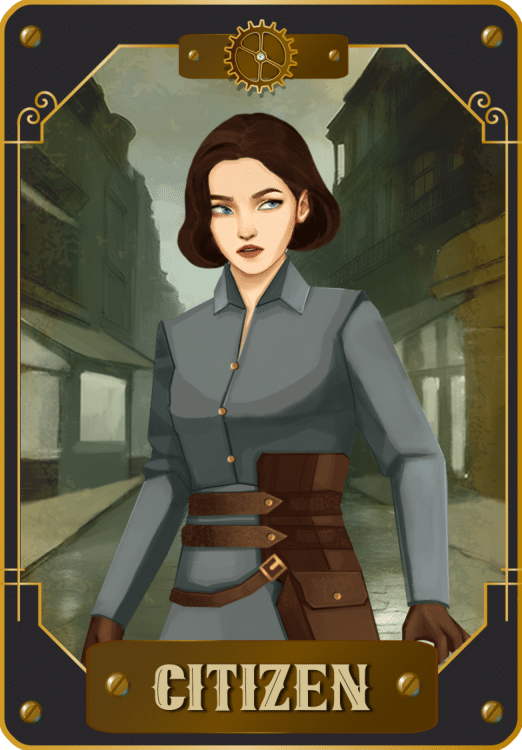
Lastly, the Citizens strive to figure out who the Mafia is during the game by just talking it out, accusing, and observing who is acting suspiciously. They don’t wake up at night cycle or have any special abilities.

Besides the character cards, the game comes with an instruction book and posters, all packaged into a popup box. The character cards allow one to assign roles discreetly without confusion, and the popup box design acts as the focal point for the gameplay. Several other games, such as Monopoly or Dungeons & Dragons, have props and a board to gather around, while card games often do not. The popup box concept is something you can put in the center and gather around. The book was originally intended to be a popup, but it didn’t seem practical to use it for that purpose, as you would have to constantly open and close the book to read the instructions. As a result, I settled on the popup box concept.
The Art
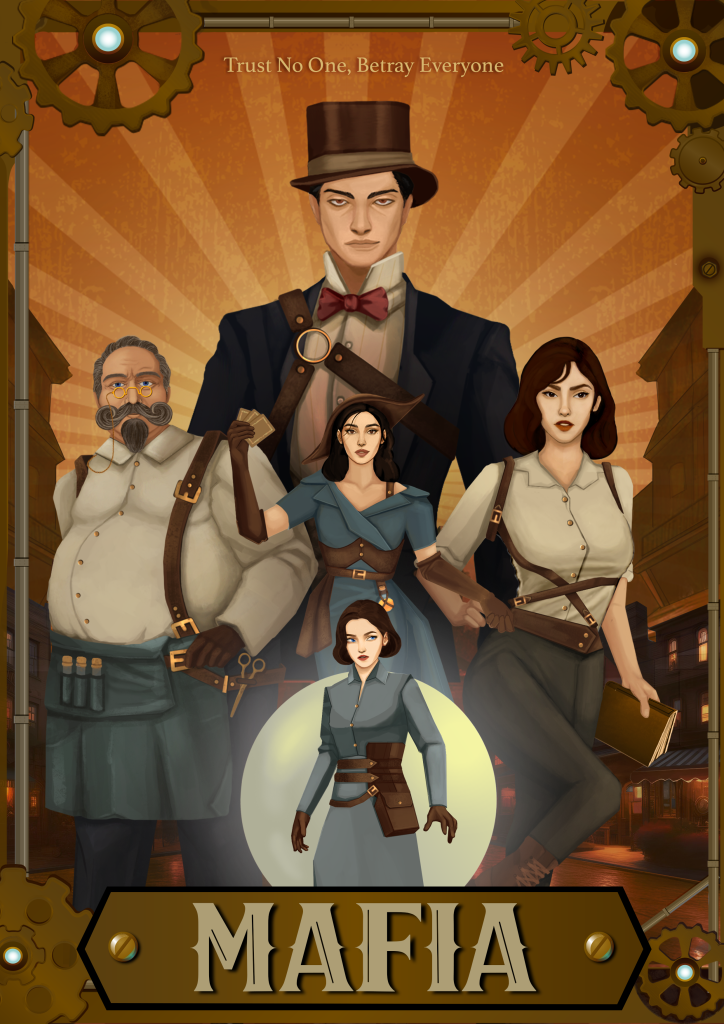
The theme is steampunk; Steampunk combines anachronistic elements, blending vintage aesthetics with futuristic technology. You can see the characters wearing elaborate clothing paired with mechanical appendages. I also drew inspiration from the 1880s-90s era and the Industrial Revolution, infusing it with advanced technology powered by steam and gears.
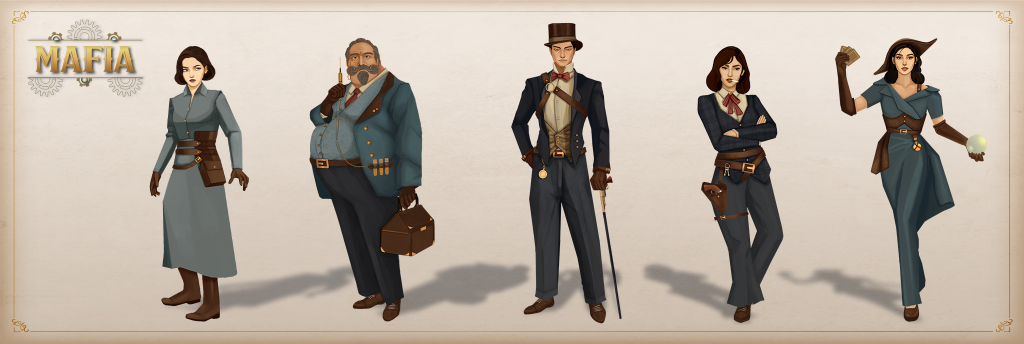
The Doctor was the first character I created; after reading his description, I understood exactly how I wanted him to look. I pictured him as an overweight, rounder persona in order to give off that caring quality while also having him appear older. When his design was complete, I sketched the other characters to fit his appearance and vibe. I wanted the Mafia figure to appear older but leaner; I took inspiration from Cillian Murphy in Peaky Blinders. While the Detective was more confident and self-assured, her design was influenced by male detectives from the nineties.
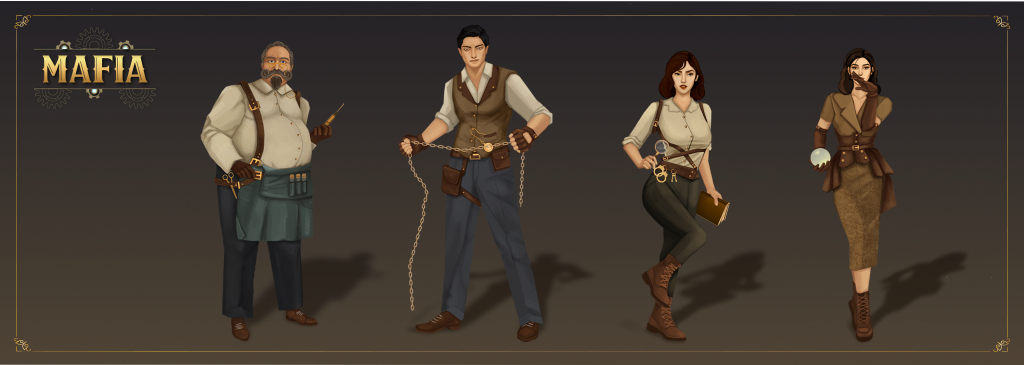
I distinguished between lower-level and upgraded-level characters by assigning them unique color schemes and attempting to identify their economic status through wardrobe items. For example, I made the higher levels appear wealthier by using more blue, black, and gold tones in their attire. At the same time, because the lower levels were impoverished, their clothing was simpler and appeared in beige, brown, and yellow. Moreover, each character was given an item to identify them that remained consistent throughout all variations. For example, the Detective had a special pocket watch, the Doctor had his syringe, and the Detective had her cuffs.
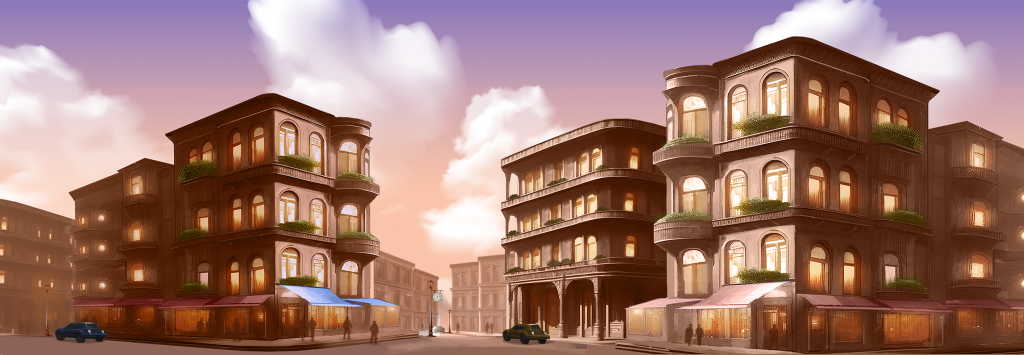
The exhibition flew by so quickly that I didn’t have time to take it all in. My work received an overwhelmingly positive response, and everyone appreciated the effort that went into it. Surprisingly, just a few individuals were familiar with the original game. Most were familiar with the game’s variant from their own countries. So it was exciting to watch how they reacted when I introduced them to the original game. The Mafia and the Seer were the most popular characters. Several people liked how attractive their character designs were and hoped the game was available in stores so they could play it. While the game is currently under development, I am hopeful that this will be achievable one day.

